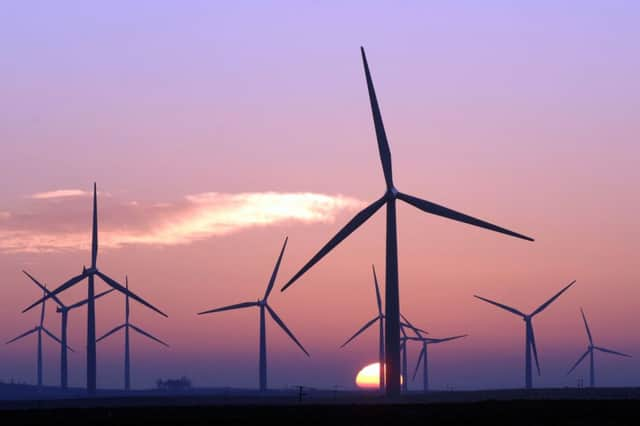Scottish Government energy policy is flawed


There is a developing crisis in Scotland’s electricity supply, created by the policies of successive UK governments but exacerbated by the Scottish Government.
At times there will be a shortage which could lead to power cuts. At others, there will be an excess which cannot be used. This is a consequence of the huge increase in intermittent wind-generated electricity.
Advertisement
Hide AdAdvertisement
Hide AdSubsidies make wind power the logical investment for energy companies, while the preference given to it on the grid reduces the profitability of conventional generation. Hence no dependable generation is being built and Scotland’s largest such generator, Longannet, is almost certain to close due to lack of profitability.
In 2010 Scotland had a secure electricity supply: two nuclear, two coal and one gas-fired power stations, and hydro stations providing dispatchable, or available on demand, power of about 8.4GW. There was a nominal wind capacity of just over 2.5GW. With peak demand about 6GW, Scotland’s electricity needs were secure.
By 2015 a major transformation has taken place. The system is still secure but only just. Cockenzie (coal) has closed and Peterhead (gas) has reduced capacity. There is still 6.7GW of dispatchable power, above peak demand but susceptible to a nuclear outage. Wind now represents 7.1GW nominal capacity, but when the wind blows hard, there is still flexible capacity to take off line. But problems are beginning to emerge. Wind load factors of less than 1 per cent can occur so that generation can be lower than 0.1GW. (At 2:20pm on 3 April 2015, total UK wind generation was 0.079GW, a load factor of 0.475 per cent.) When this coincides with a reduction in dispatchable generation, power has to be imported, as it has been on 162 days in the past three years.
Conversely, high winds with load factors of more than 80 per cent at times of low demand have required output reductions from Longannet, now the only major resource that can be turned down relatively easily. This increases the cost of operating the plant, and along with other factors such as carbon taxes means that it is almost certain to close.
By 2020, if already consented wind capacity is built there will be 15.8GW of wind and the Scottish Government’s “100 per cent renewable generation’ target will be exceeded by nearly 20 per cent.
Peterhead and the two nuclear plants should still be operational. There will be 4.4GW of dispatchable power, 1.6GW below peak demand. Although 15.8GW of wind capacity operating above 10 per cent capacity should cover that for most of the time, when load factors fall below this shortfalls will occur. These will have to be met by importing power from England, assuming that adequate capacity does in fact exist there. When one of the nuclear plants is off line for maintenance, Scotland’s security of supply will become entirely dependent upon imports.
The other problem is what to do with a surplus of electricity. Minimum demand is roughly 2.3GW, which would be almost met by the two nuclear power stations, neither of which can be turned down easily.
With 15.8GW of installed wind capacity operating at 80 per cent load factor, wind generation could peak at 12.6GW, nearly all of it surplus to Scotland’s needs. As producers get paid their elevated guaranteed price regardless of whether or not there is demand for the power, this represents a substantial cost to consumers, unless the surplus can be sold.
Advertisement
Hide AdAdvertisement
Hide AdProposed new interconnection capacity to England would allow export of only about half the excess.
There is talk of storing electricity but the only means of large scale storage is pumped hydro The UK’s four such facilities have a capacity of only 27GWh, just over three-quarters of an hour of average UK demand. Coire Glas, the only addition currently proposed, would have a storage capacity of 30GWh, less than one third of Scotland’s average daily consumption and about a tenth of a windy day’s excess production. Furthermore, it would only handle 0.6GW. To absorb 12GW of excess generation would require at least 20 schemes of this size. The geography and hydrology of such projects is so restrictive that it is not clear if there are any further suitable sites in the country, let alone 20.
In committing the country to a blind dash for wind generation, our politicians sought no competent advice on how this could be integrated with existing generation, nor how it would affect the cost and security of our electricity supply. Not only is there no need for any more wind in Scotland’s energy mix but the country’s lack of conventional supply will ensure long-term reliance on the UK and Europe for the safety of Scotland’s electricity supply.
• Jack Ponton, FREng, Scientific Alliance Scotland, www.scientific-alliance.org/scotland
• John Williams is chairman of the Borders Network of Conservation Groups